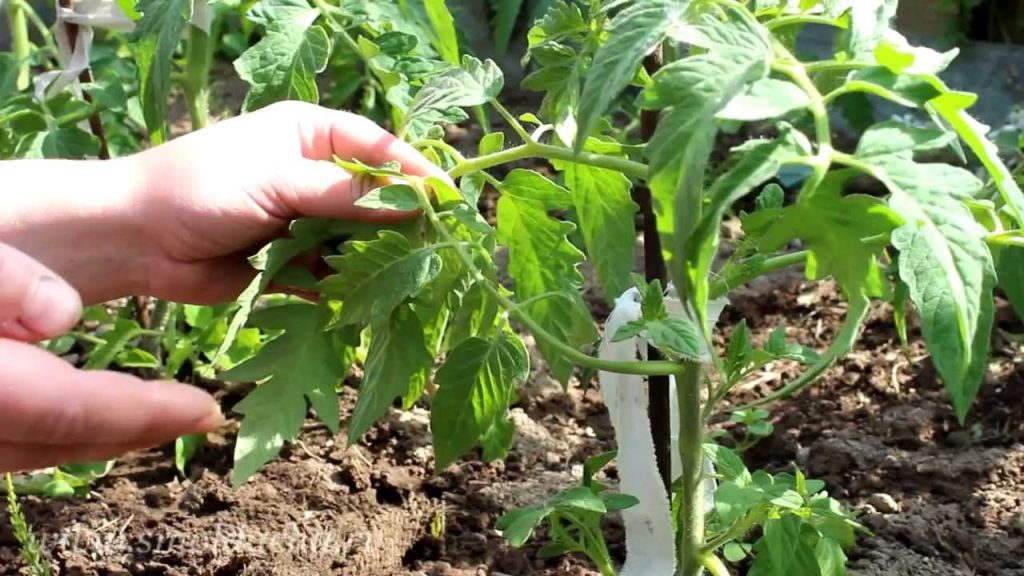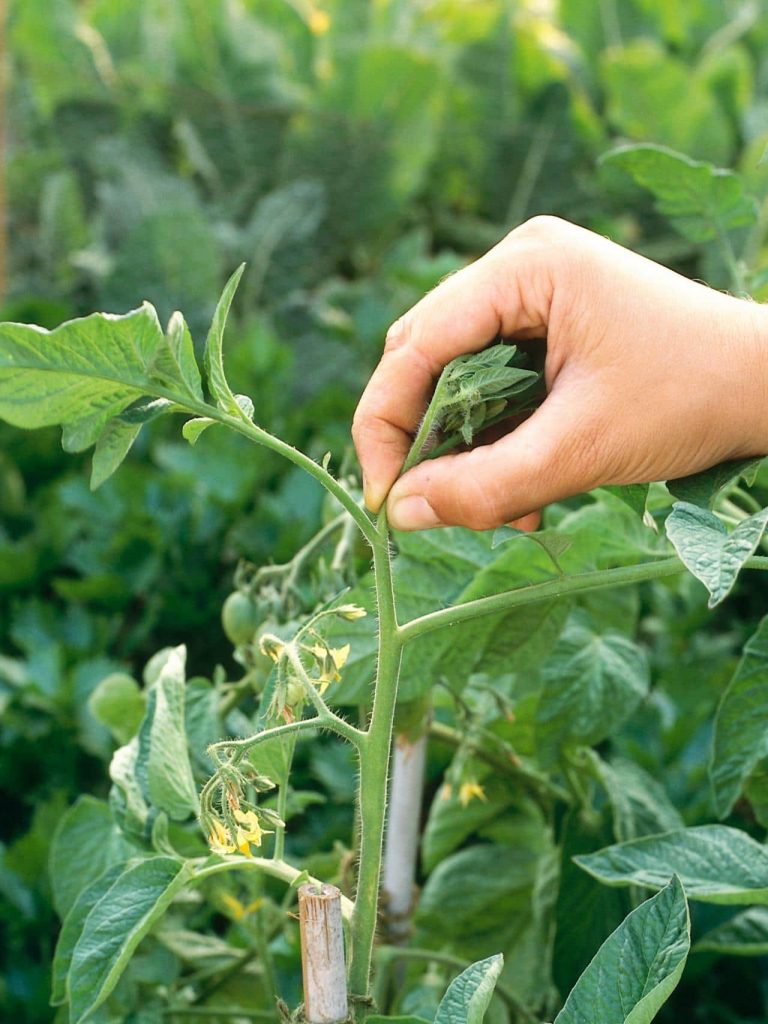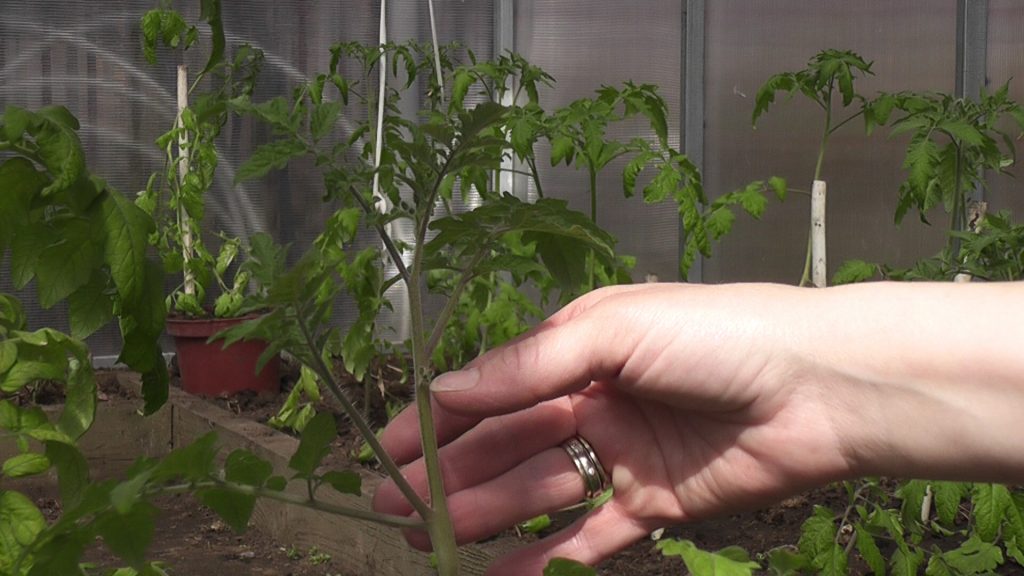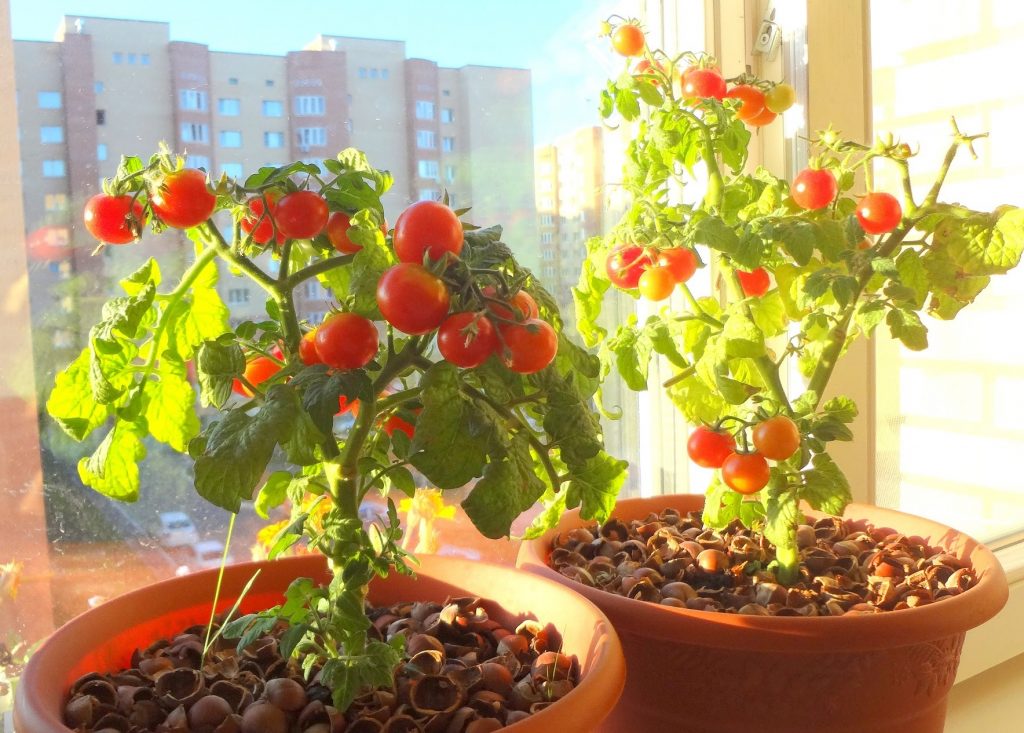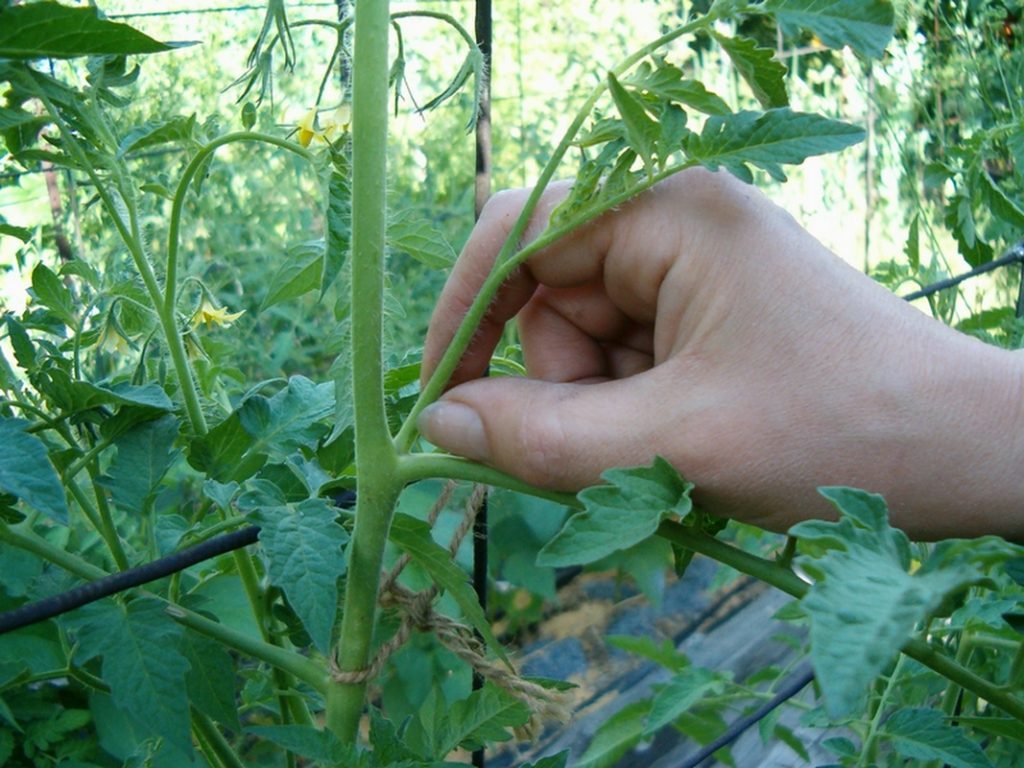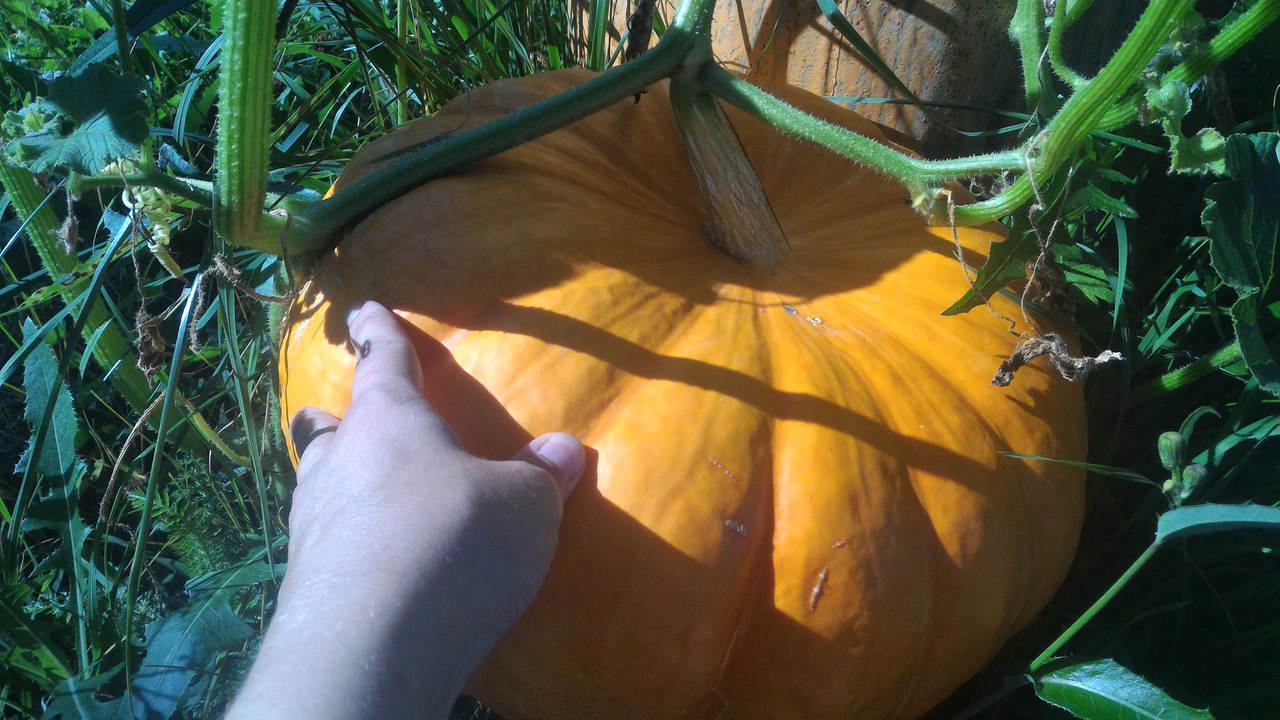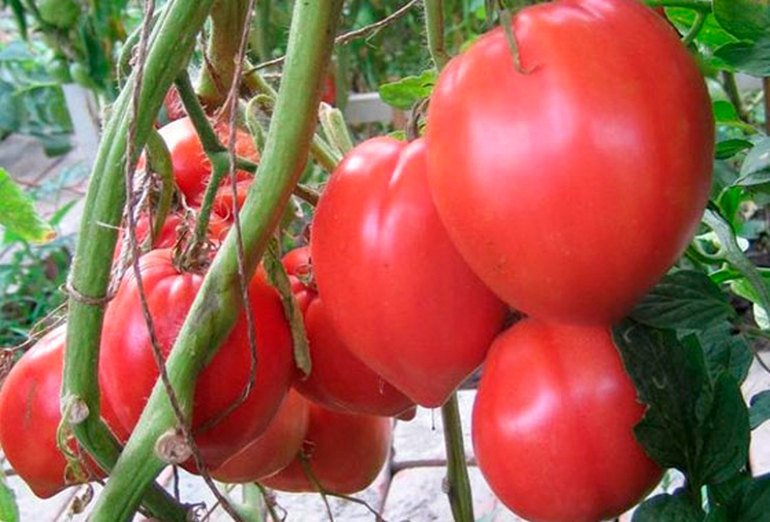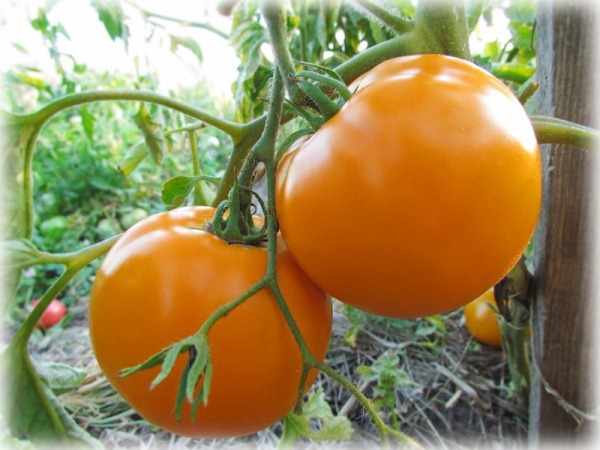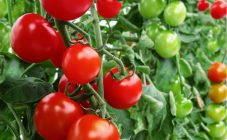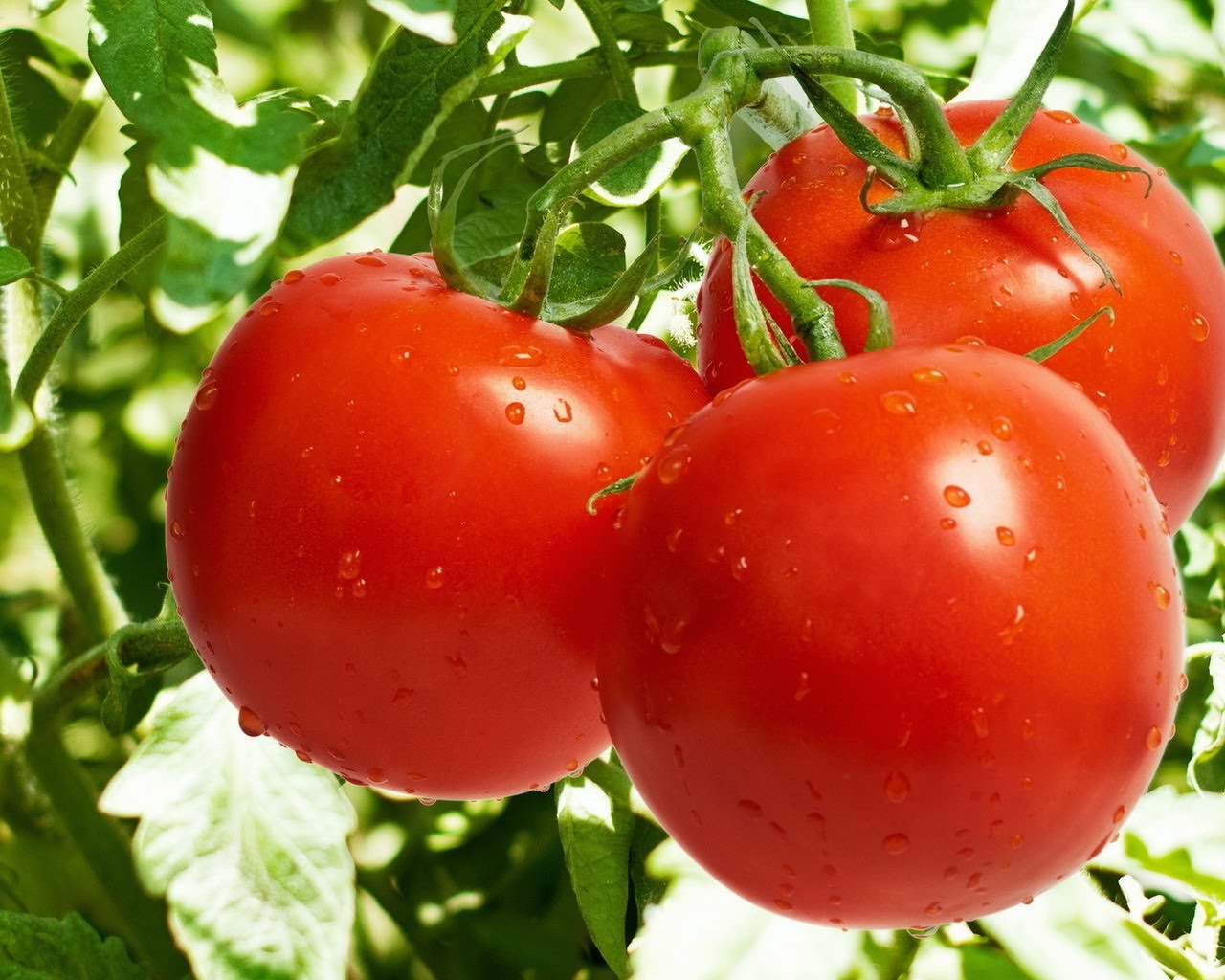Content:
Just a couple of centuries ago in Europe, tomatoes were considered poisonous for food and were grown exclusively for decorative purposes. Now it is difficult to imagine a person who would not like tomatoes. Landowners will definitely assign a place on the site for the Solanaceous beds. But a decent harvest of juicy fruits can be obtained only if all the rules of agricultural technology are observed.
Pinch and stepson
Tomato varieties differ in terms of ripening, fruit color and size, bush height. But they all require proper cultivation. Among the elements of agricultural technology, not the last place is occupied by the formation of a plant, consisting of:
- pinching - removal of excess lateral shoots that have grown from the leaf axils;
- pinching tomatoes - removing the top of the stem with the growing point.
The pinch stops the further development of the shoot, redirecting all the forces of the plant to improve the yield. The stepchildren weaken the bush by drawing some of the nutrients towards themselves. This negatively affects the formation of fruits. In addition, a thickened plant is more prone to disease with fungal diseases.
When growing tomatoes, pinching and pinching are mandatory for most varieties. And although these are different types of work that pursue certain goals, newly-made gardeners often confuse them or use one of the elements of forming a bush.
True, there are varieties of tomatoes that do not need to remove growth points. In the rest of the Solanaceae, the pinching of tomatoes is carried out taking into account the growing conditions.
When and why
Thanks to the growth points, the plants develop, giving new stems. But when it comes to the quality of fruits and a high yield, it is more reasonable to suspend the growth of the bush at a certain level, i.e. pinch the tops.
There will be several visits on one bush, and their number depends on the growth rate of the stems. Pinches begin with the active growing season, in the second half of July, and last until the end of August. The procedure for tall bushes is especially important.
If they begin to fight with the stepchildren even before the formation of ovaries, then the tomato should be pinned in the fruiting phase. This procedure allows you to achieve the following goals:
- improve the nutritional quality of the bush;
- shorten the ripening time of the tomato;
- significantly prolong the fruiting period.
All these points have a positive effect on the size of fruits and their quantity, significantly increasing the yield. For those who like to grow Cherry fruits, the size of tomatoes is not the main purpose of pinching, but their number on one brush is important.
Having carried out pinching of bushes, it is possible to get real placers not only in tall plants. Even low bushes, overloaded with clusters, will have to be tied up if the necessary procedures are not completed in time. Otherwise, all the power will go to the tops and barren flowers with a small number of ovaries.
In the southern regions of Russia, when growing determinant varieties, tomatoes are not pinched at all, giving them the opportunity to develop naturally. And in the Middle Lane and beyond the Urals, pinching is a necessary stage in the care of tomato plantations. Without this procedure, the fruits will not have time to finally form and ripen.
If the early varieties can still reproduce well without pinching, then the autumn cold will interfere with the later ones. Excess moisture will lead to cracking of unripe tomatoes, as well as provoke fungal diseases.
How to do it right
After waiting for the fruits to be tied on the bush, the summer resident proceeds to the procedure. But not everyone knows how to pinch tomatoes correctly. The slightest mistake will not only reduce the yield, but also lead to disease or death of the plant. If everything is done carefully, the brushes will receive adequate nutrition, which will increase the number of ovaries.
The pinching scheme in each case depends on the presence of stems on the bush. The timing of ripening, the duration of fruiting, the need to create comfortable conditions for plants planted under polycarbonate or glass are also taken into account.
To do everything right, use a step-by-step algorithm:
- when starting to pinch, determine the places where the tops are trimmed;
- 2 leaves retreat from the uppermost cluster of fruits on the stem and the excess is cut off; for the procedure to be painless, sharp manicure scissors should be used (although many prefer a pruner);
- the cut area should be immediately sprinkled with ash or ash to avoid infection.
Experienced farmers give beginners advice on tall bushes - it is better to form one strong stem on the plant, starting to pinch it at the level of the root zone. The optimal number of brushes on a long shoot is 7-8 pcs.
The determinants should have no more than 2 lateral stepchildren. On each stem, 2-3 fruiting brushes should be left. Then the bunches will be abundantly strewn with fruits.
The formation of tomato bushes, as mentioned above, depends on the variety planted. Each gardener has his own skills for carrying out this procedure, but 3 main methods are very popular.
Pinching techniques
- indeterminate varieties are grown in 1 stem; to exclude the development of lateral stems, the procedure is carried out throughout the summer;
- to form the 2nd stem, the upper stepson is not removed; it also promotes a large harvest, but slows down the ripening of the fruit; this method is not suitable for growing tomatoes in open ground in regions with early winters;
- a 3-stem bush is suitable for early varieties, since development in this case will proceed naturally; to get a well-bearing bush, 2 of the strongest side shoots are left on it.
Each of the methods stimulates the development of the bush, has a positive effect on the quality of the fruit. Plucking tomatoes should be combined with pinching, which also does not stop throughout the growing season. Removing excess shoots will provide the plant with good lighting and make plantation maintenance easier.
In the garden and in the greenhouse
This crop is grown both in open beds and in winter greenhouses, film greenhouses. Each option has its own rules of agricultural technology. Therefore, beginners reasonably ask how to pinch tomatoes in indoor cultivation?
Regardless of where the Solanaceae grow, the pinching technique does not change. But the terms in which it is held are somewhat different. However, not all greenhouse varieties are subject to this procedure.
Greenhouse tomatoes
Tomatoes are rightfully called a greenhouse crop - many varieties have been bred specifically for greenhouses. At the same time, tomatoes are grown not only in winter greenhouses, but also in spring ones, as well as greenhouses. Many varieties are used in 2 crop rotations, and this agricultural technique has its own specifics.
Features of indoor growing of tomatoes
| Shelter type | Suitable varieties | Stealing | Pinching |
|---|---|---|---|
| Glazed winter greenhouses | |||
| Winter-spring turnover | Choosing tomatoes that can set fruit well in low light: "Adonis", "Bolero", "Martha", "Ramsay", etc. | Form 1 stem. Stepsons are removed regularly, until the length of the leaves exceeds 5-7 cm; When the fruits begin to ripen, remove the lower leaves, leaving 14-16 of the greenest plates above the brushes | When the bush reaches a height of 2 m, and 8-9 brushes with fruits are formed on it, the top of the stem is pinched |
| Summer-autumn turnover | The varieties used in the open field are quite suitable (such as "Moscow Autumn", "Swallow", etc.) | Also grown on the 1st stem, leaving 6-8 brushes on it; The lower leaves are removed, but in this turn it is enough to leave 5-6 plates | Pinching a tomato in a greenhouse is carried out 1-1.5 months before the end of the growing season. In this turnover, it occurs at the beginning of October. |
| Other types of shelters | |||
| Spring film greenhouse | The best varieties are "Nakhodka", "Carlson", "Gruntovy Gribovsky", "Vainmon" | Plants, immediately after planting seedlings, are tied to a trellis and, as they grow, twist the top around the twine; At the same time, stepchildren are removed, forming a bush of 1 stem | From the moment the fruits ripen, the foliage is gradually removed under each brush, and the pinching is not carried out, allowing the stem to trudge along the trellis |
| Film greenhouses | Low-growing varieties are suitable (due to the limited height of the airspace): "White filling", "Talalikhin-186", "Peremoga", "Otradny", "Siberian early ripening", etc. | Passing is carried out before the appearance of the first flower brush. Then they are engaged in the formation of a bush for 1 or 2 stems | Do not pinch |
Cutting off the tops on the stem of plants developing in a shelter is carried out in the same way as when pinching tomatoes in the open field. With one difference: no need to pay attention to weather conditions. When the culture is grown in the beds, the procedure is carried out on windless, not rainy days, preferably in the evening.
Tomatoes on the windowsill
Many gardeners liked the indoor type of tomatoes that can be grown year-round. They are planted in two terms:
- at the beginning of the year, settling on the windowsill; if desired, in the spring you can land in the garden; if you cut off the cuttings at the same time, you get additional seedlings;
- in the second run, the seedling is formed by the end of July - beginning of August; ripening of fruits in this case falls on autumn-winter; the main condition here is good lighting (additional artificial lamps will be needed).
When growing indeterminate varieties ("Wagner", "Garten", "Freude", "Manicure", "Mirabel") pinching is required. All shoots are removed, except one, which is called replacement. It should be located at the bottom of the bush.
When 4-5 fruiting brushes are formed on the main stem, it is necessary to pinch off the main apex. After the tomatoes have ripened, the main shoot is removed, allowing the replacement stem to develop. In this case, a spare stepson is again formed at the bottom of the bush, and the procedure is repeated.
Homemade tomatoes can be grown year-round by turning the bush into a real tree. Periodically pruned stepchildren are excellent breeding material, as they take root quite easily.
Only specially selected varieties are suitable for growing Solanaceae in an apartment. In addition to the above, "Gnome", "Japanese dwarf", "Room miracle", "Micron", "Bonsai", "Florida Petit" and others like that, perfectly take root on the windowsills.
Tomato seedlings
Few people grow tomatoes by sowing seeds in the ground - it is better to do this by seedling. Here the question immediately arises: is it necessary to pinch tomato seedlings?
It was written above that the pinches begin to do when fruit ovaries form on the bushes. This speeds up their ripening and increases the yield. This is not necessary at the stage of seedling development. But, nevertheless, the pinching of tomato seedlings is carried out, arguing this with other arguments:
- to activate the root system;
- to obtain a stronger dense seedling;
- in order to slow down growth.
The last argument is especially important if the seedlings have gone up actively or are standing still in anticipation of suitable weather.
You can form a bush even at the seedling stage, determining how many shoots to leave on it. The choice is influenced by the subsequent place of growing tomatoes and the variety. For tall bushes and those that will bear fruit in the heifer, it is better to leave 1 main stem. It is recommended to grow plants with 2-3 stems outdoors (especially if they are undersized).
Asking the question of how to pinch tomato seedlings correctly, attention is first paid to the stepsons - first of all, they are removed. The tall variety is fully stepchild. In bushes with limited growth, the first stepson is not touched. If it is necessary to form 3 stems, a lateral shoot is left a little higher.
If the seedlings were not pinned during their cultivation, then the procedure is carried out when they are planted in a permanent place, then repeat every 5-7 days.
Pinching tomatoes, like pinching, are mandatory moments of agricultural technology. Only a few varieties thrive well without pinching. For other varieties, this is an opportunity to avoid late blight, especially if there is a potato plantation nearby.
To prevent the plants from getting infected during the procedure, the instrument is pre-disinfected in a saturated solution of manganese, copper oxychloride or vitriol, as well as in synthetic fungicides. Phosphorus-potassium fertilizer will help stimulate the bushes to fruiting, which should be applied to the garden a week after the first pinching.
In order to understand how necessary the procedure is, it is recommended to look for visual video material on the Internet.
